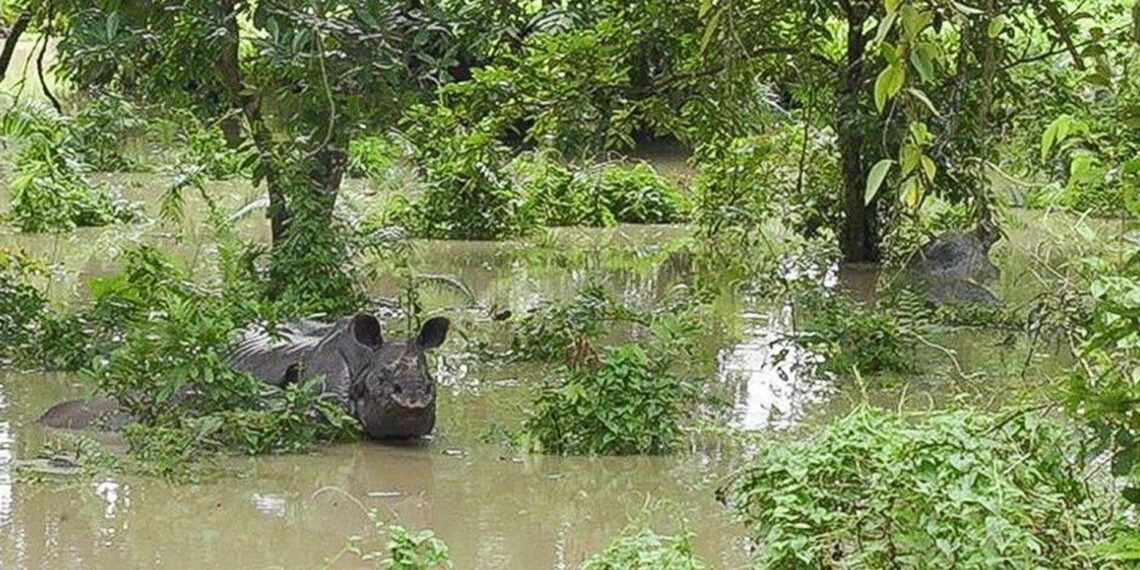By Bibhab Kumar Talukdar
Assam is blessed with two major rivers – the Brahmaputra, the fourth largest river in the world, that flows from east to west and the Barak River, primarily located in southern part of the state.
The alluvial floodplain ecosystems along the Brahmaputra River provide crucial habitat for the Greater One Horned Rhino in Assam.
During the monsoon, Assam witnesses annual floods that pose challenges for both humans and wildlife.
Rhino-bearing areas along the Brahmaputra, such as Kaziranga National Park, Orang National Park, Pobitora Wildlife Sanctuary (WLS), Laokhowa WLS, and Burhachapori WLS, face floods almost every year, ranging from low to high intensity.
Despite the annual floods being often portrayed as detrimental to these areas, they are actually essential for floodplain ecosystems such as Kaziranga NP.
While some wildlife casualties occur during these floods, it’s a natural selection process ensuring survival of the fittest.
Without these annual floods, floodplain ecosystems, including those in Kaziranga NP and others, would struggle to sustain wild animals, including rhinos, as they “energise” these habitats along the Brahmaputra.
Floods should be viewed as ecological services necessary to maintain conditions suitable for wildlife in floodplain ecosystems.
Kaziranga NP has experienced floods since the 1950s, yet the rhino population has consistently grown, from 366 rhinos in 1966 to 2,613 in recent times.
Let’s not solely blame floods for impacts on Kaziranga or rhino areas like Pobitora.
In 1971, Pobitora housed only 5-8 rhinos, but despite annual flooding, the population has increased to 107 recently.
This natural process allows weaker individuals to perish while stronger progeny thrive and continue the legacy of rhinos.
Some media outlets wrongly portray floods in Assam’s rhino-bearing areas as harmful to rhinos.
As MK Yadava, Special Chief Secretary to the Government of Assam, aptly stated on social media, “Kaziranga would suffer without floods. They are its lifeline, rejuvenating the park through natural water movements. Animals at Kaziranga are natural survivors and among the best in their class.”
What’s crucial is ensuring that natural ecological processes operate with minimal human interference, allowing wild animals to move naturally based on their instincts.
The author is a PhD, wildlife biologist with experience in administration, project planning and implementation, monitoring and evaluation, policy analyst related to wildlife and environment.















